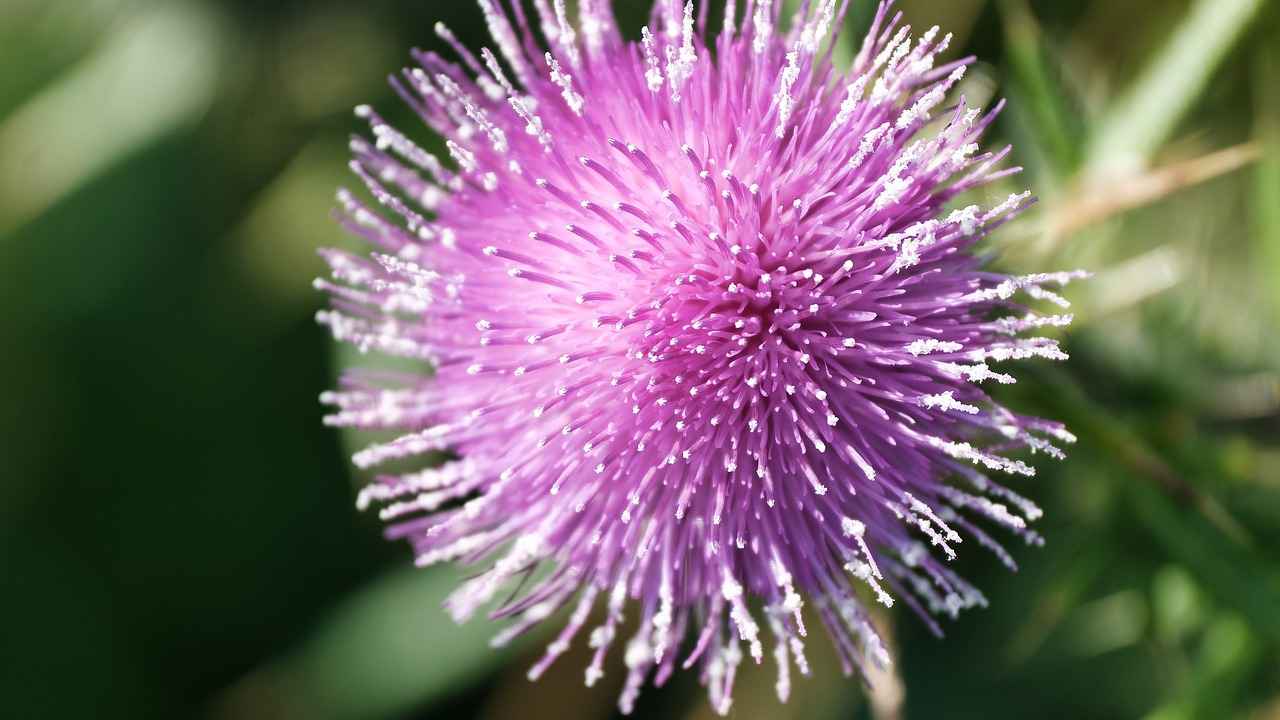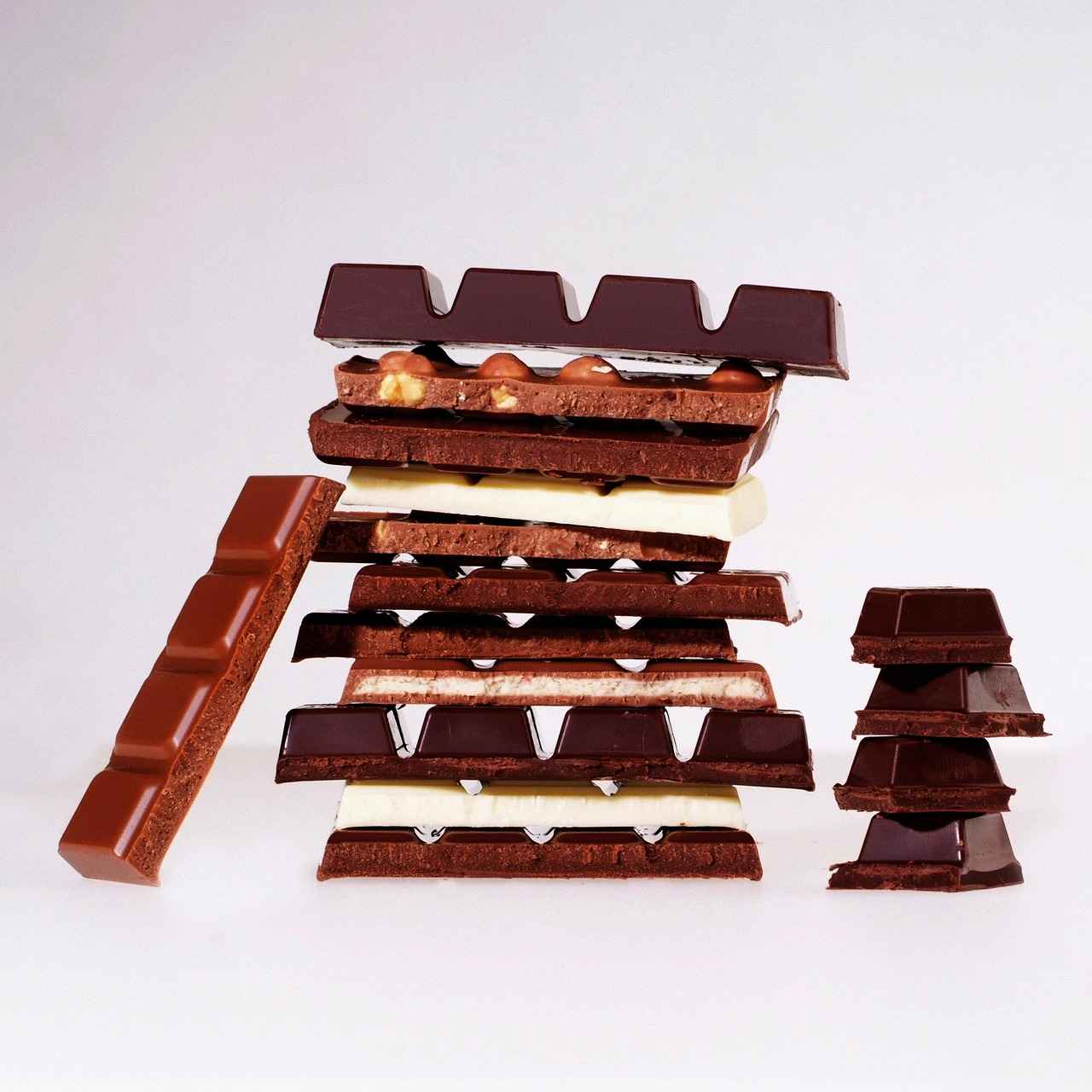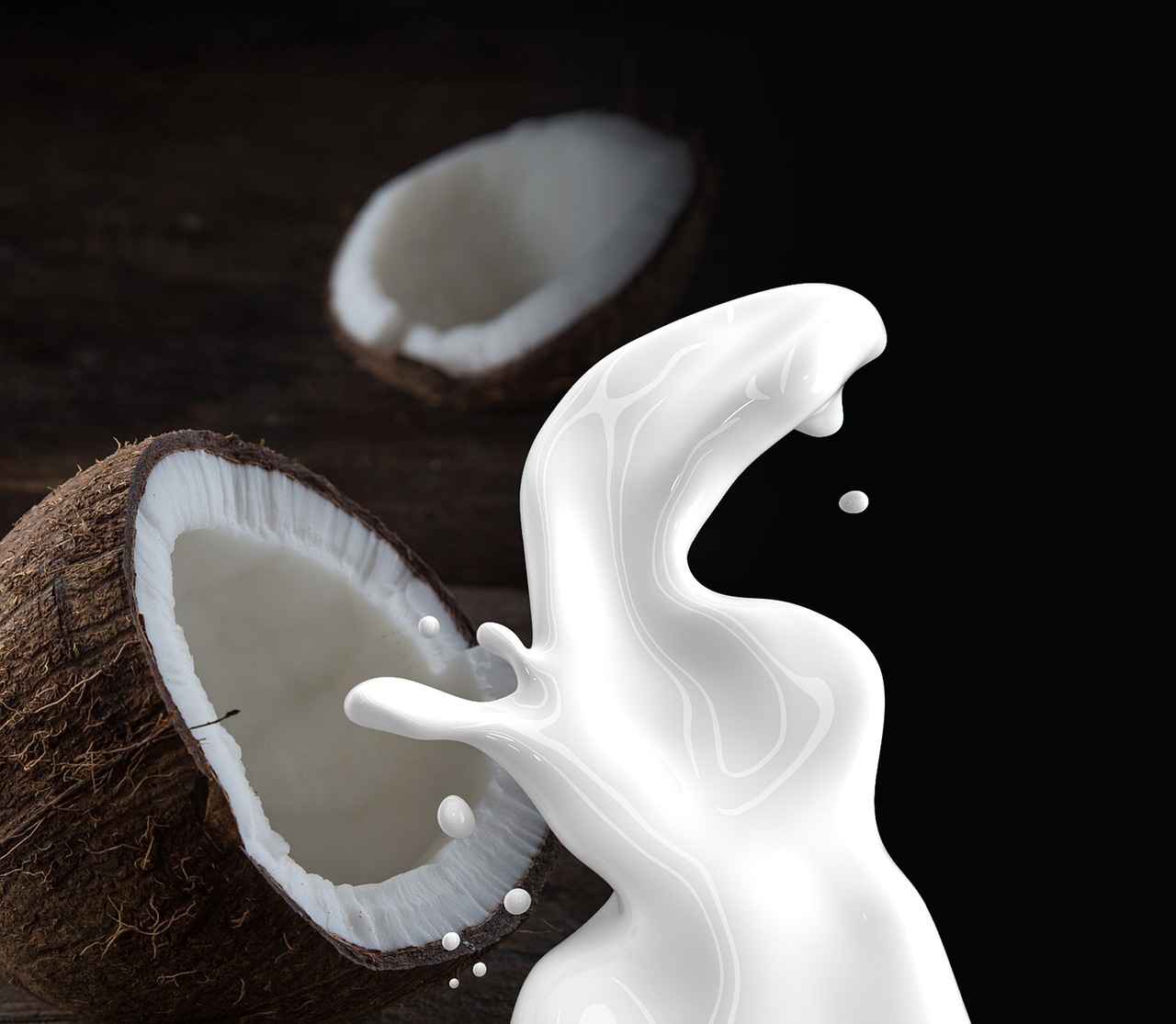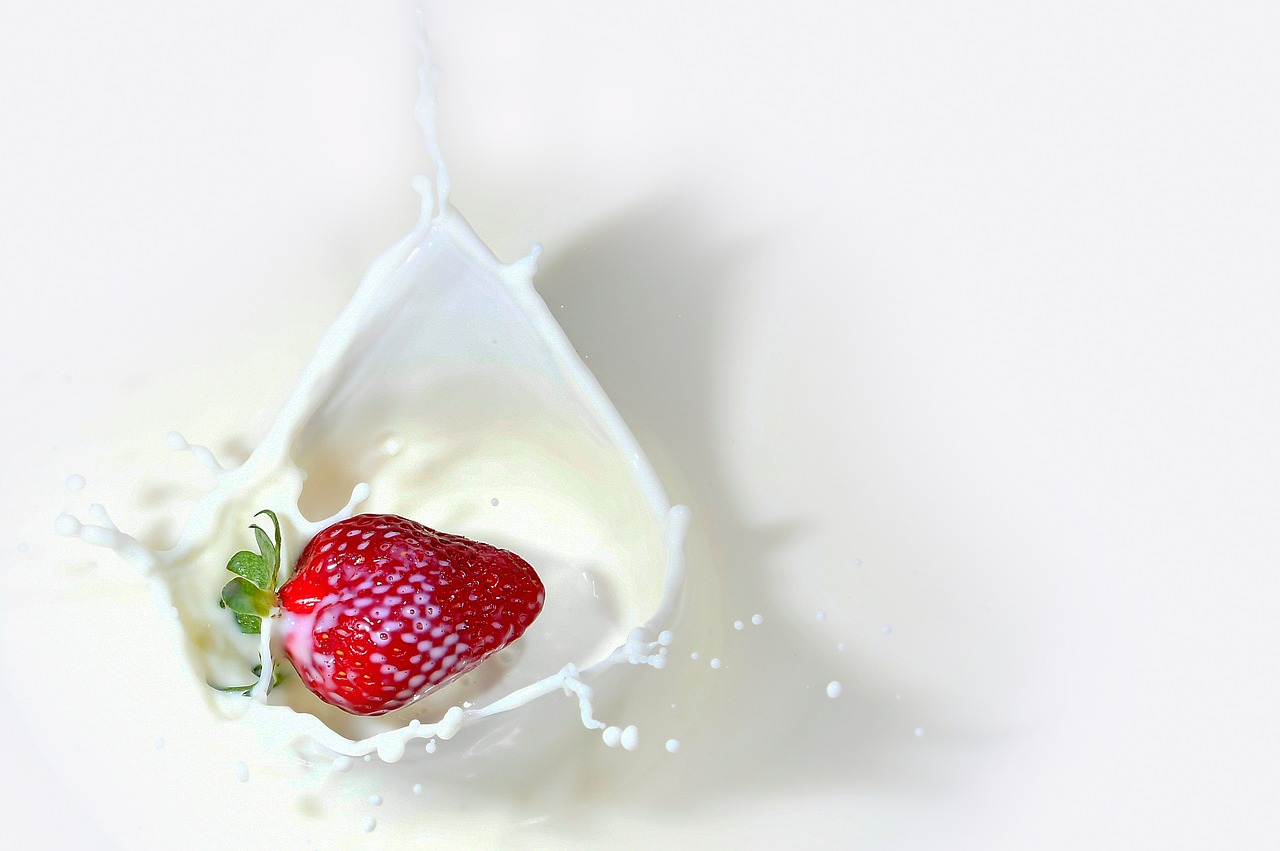This article explores the benefits and recipes for creating breast milk lotion, a natural skincare solution that harnesses the nourishing properties of breast milk for healthy skin. With its rich composition of vitamins, minerals, and antibodies, breast milk has been shown to provide various benefits for skin health, making it a unique ingredient in homemade lotions.
Breast milk lotion offers numerous benefits that can enhance skin health. Some of the key advantages include:
- Hydration: The natural fats in breast milk help to moisturize the skin, making it soft and supple.
- Nourishment: Packed with essential nutrients, breast milk can promote skin repair and rejuvenation.
- Soothing Properties: It can alleviate irritation and redness, making it ideal for sensitive skin.
Moreover, the presence of antibodies in breast milk can help combat skin infections, making it a beneficial option for those with specific skin conditions.
Making breast milk lotion at home is simple and requires just a few ingredients. Here’s how you can craft your personalized skincare product:
The primary ingredients you will need include:
- Breast Milk: The star ingredient that provides hydration and nourishment.
- Carrier Oils: Oils like coconut or almond oil enhance moisture retention.
- Emulsifiers: Ingredients such as beeswax or emulsifying wax help combine water and oil.
1. Gather all your ingredients and tools (a double boiler, whisk, and containers).2. In a double boiler, gently heat ¼ cup of carrier oil with ¼ cup of beeswax until melted.3. Slowly add ½ cup of breast milk while whisking continuously.4. Once well combined, remove from heat and let it cool slightly before transferring to containers.5. Allow the lotion to set completely before use.
Proper storage is crucial for maintaining the freshness and effectiveness of your homemade lotion. Here are some tips:
Using airtight containers is essential for preserving the lotion’s quality. Glass jars or BPA-free plastic containers are recommended to prevent contamination and degradation.
Breast milk lotion typically has a limited shelf life, usually around 2-3 weeks when stored in the refrigerator. Always check for signs of spoilage, such as changes in color or smell.
Breast milk lotion is often praised for its healing properties. It can be especially effective for various skin conditions, including:
Individuals suffering from eczema may find relief through the anti-inflammatory properties of breast milk. Incorporating the lotion into a daily skincare routine can help soothe flare-ups and maintain skin moisture.
Breast milk lotion can effectively soothe and heal diaper rash. For best results, apply a thin layer to the affected area during diaper changes to maximize its benefits for sensitive baby skin.
While breast milk lotion boasts many advantages, it also has limitations:
Some individuals may experience allergic reactions to certain ingredients in breast milk lotion. It is essential to conduct a patch test before widespread use to ensure safety.
It’s important to note that breast milk lotion should not replace professional medical treatments for serious skin conditions. Always consult healthcare providers for persistent issues.

What Are the Benefits of Breast Milk Lotion?
Breast milk lotion is gaining popularity as a natural skincare solution that utilizes the unique properties of breast milk to promote healthy skin. This lotion is not only gentle and nourishing but also offers a plethora of benefits that can help address various skin concerns. Below, we delve into the remarkable advantages of using breast milk lotion and why it deserves a spot in your skincare routine.
Breast milk lotion is renowned for its hydrating, nourishing, and soothing properties. Its composition is rich in vitamins, minerals, and antibodies that can significantly enhance skin health. Here are some of the key benefits:
- Deep Hydration: Breast milk contains a high percentage of water and essential fatty acids, making it an excellent moisturizer. It helps to lock in moisture, keeping the skin hydrated and preventing dryness.
- Skin Nourishment: The vitamins and nutrients found in breast milk, such as Vitamin E and A, are crucial for maintaining healthy skin. These components aid in cell regeneration and promote a radiant complexion.
- Soothing Irritation: Breast milk has natural anti-inflammatory properties that can help reduce redness and irritation. It is particularly beneficial for individuals with sensitive skin or conditions such as eczema.
- Healing Properties: The antibodies present in breast milk can assist in healing minor wounds and skin irritations. This makes it a great option for treating diaper rash or other skin conditions.
- Natural Ingredients: Unlike many commercial lotions that contain synthetic chemicals, breast milk lotion is made from natural ingredients, making it a safer choice for both babies and adults.
Incorporating breast milk lotion into your skincare routine can provide profound benefits, particularly for those with sensitive or problematic skin. Its natural formulation not only enhances skin texture but also supports overall skin health.
As with any skincare product, it’s essential to perform a patch test to ensure there are no allergic reactions. While breast milk lotion is generally safe, individual sensitivities may vary.
In summary, breast milk lotion offers a multitude of benefits that promote hydration, nourishment, and healing properties for the skin. Its natural composition makes it an appealing choice for those seeking a gentle yet effective skincare solution.

How to Create Your Own Breast Milk Lotion?
Creating your own breast milk lotion is a rewarding and straightforward process that allows you to harness the natural benefits of breast milk for your skin. This personalized skincare product is not only nourishing but also free from harmful chemicals, making it an excellent choice for those who prefer natural remedies.
To get started, you will need a few essential ingredients and tools. Below, we outline the necessary materials and a step-by-step guide to crafting your own breast milk lotion.
- Breast Milk: The star ingredient, rich in vitamins, antibodies, and nutrients.
- Carrier Oils: These oils, such as coconut oil or almond oil, provide moisture and enhance the lotion’s texture.
- Emulsifiers: Ingredients like beeswax or emulsifying wax are crucial for blending water and oil, ensuring a smooth consistency.
- Essential Oils (optional): For added fragrance and therapeutic benefits, consider incorporating essential oils like lavender or chamomile.
Follow these simple steps to create your breast milk lotion:
- Gather Your Ingredients: Measure out 1 cup of breast milk, 1/2 cup of your chosen carrier oil, and 1/4 cup of emulsifier.
- Heat the Ingredients: In a double boiler, gently heat the carrier oil and emulsifier until melted, stirring occasionally.
- Add Breast Milk: Once the oil and emulsifier are fully melted and combined, remove from heat and allow it to cool slightly before adding the breast milk.
- Blend: Using a hand mixer or blender, blend the mixture until it reaches a creamy consistency.
- Cool and Store: Allow the lotion to cool completely before transferring it to an airtight container for storage.
Proper storage is essential to maintain the freshness and effectiveness of your homemade lotion. Here are some tips:
- Choose Airtight Containers: Use glass jars or BPA-free plastic containers to prevent contamination.
- Keep it Refrigerated: Store your lotion in the refrigerator to extend its shelf life and maintain its potency.
- Check for Spoilage: Be vigilant for any changes in smell, texture, or color, which may indicate spoilage.
Breast milk lotion is often praised for its potential healing properties. Many users report positive effects on various skin conditions, including:
- Eczema Relief: The anti-inflammatory properties of breast milk can soothe irritated skin.
- Diaper Rash Treatment: Applying breast milk lotion can effectively heal and prevent diaper rash in babies.
By following these steps and using the right ingredients, you can create a nourishing breast milk lotion that benefits your skin and caters to your personal skincare needs. This DIY approach not only empowers you to control what goes on your skin but also allows you to enjoy the unique properties of breast milk in a soothing lotion form.
Essential Ingredients for Breast Milk Lotion
Creating your own breast milk lotion can be a rewarding and beneficial experience, especially considering the numerous advantages it provides for skin health. One of the most critical aspects of formulating an effective lotion is understanding the essential ingredients that contribute to its effectiveness. In this section, we will delve into the key components that make up breast milk lotion, including their roles and benefits.
The primary ingredients that form the foundation of breast milk lotion include breast milk, carrier oils, and emulsifiers. Each of these components plays a vital role in creating a lotion that is not only effective but also safe and nourishing for the skin.
Breast milk is known for its rich nutritional profile, containing essential vitamins, minerals, and antibodies that promote skin health. It is particularly beneficial for its anti-inflammatory properties, which can soothe irritated skin. The presence of lactoferrin and immunoglobulins in breast milk can help protect the skin from infections and promote healing.
Carrier oils are crucial in the formulation of breast milk lotion as they provide hydration and nourishment. Oils such as coconut oil, almond oil, and jojoba oil are popular choices. Each oil has unique properties; for example:
- Coconut oil is known for its moisturizing capabilities and antibacterial properties.
- Almond oil is rich in vitamin E, which helps to nourish and protect the skin.
- Jojoba oil closely resembles the skin’s natural oils, making it easily absorbed.
Choosing the right carrier oil can enhance the lotion’s texture and absorption, making it suitable for various skin types.
Emulsifiers are essential in lotion making as they help blend water and oil, creating a stable and smooth product. Common emulsifiers include beeswax and emulsifying wax. These ingredients ensure that the lotion maintains its consistency and does not separate over time. The right emulsifier can also enhance the lotion’s texture, making it more pleasant to apply.
When formulating breast milk lotion, it is important to strike a balance between these ingredients. The combination of breast milk, carrier oils, and emulsifiers not only ensures a smooth consistency but also retains the beneficial properties of breast milk. This balance allows the lotion to effectively hydrate and nourish the skin while providing a soothing effect.
By understanding the essential ingredients in breast milk lotion, you can craft a product that is tailored to your skincare needs. Incorporating breast milk, the right carrier oils, and effective emulsifiers will result in a lotion that is both nourishing and effective. This knowledge empowers you to create a natural skincare solution that harnesses the unique benefits of breast milk, promoting healthy and radiant skin.
Choosing the Right Carrier Oils
When it comes to creating your own breast milk lotion, one of the most important decisions you’ll make is selecting the right carrier oil. Carrier oils are essential for hydrating the skin and enhancing the overall texture and absorption of the lotion. This article will delve into why carrier oils matter, how to choose the best ones for your skin type, and the benefits of popular options like coconut and almond oil.
Carrier oils serve as the base for your lotion, providing moisture and nutrients to the skin. They help to dilute the breast milk, allowing for a smooth application while ensuring that the beneficial properties of the milk are effectively delivered. Each type of carrier oil has its unique properties, making them suitable for different skin types and conditions.
- Dry Skin: If you have dry skin, consider using oils like coconut oil or avocado oil, which are rich in fatty acids and provide deep hydration.
- Sensitive Skin: For sensitive skin, almond oil or jojoba oil are excellent choices due to their gentle nature and soothing properties.
- Oily Skin: If you struggle with oily skin, grapeseed oil or hemp seed oil can help balance oil production without clogging pores.
Here’s a closer look at some commonly used carrier oils:
| Carrier Oil | Benefits |
|---|---|
| Coconut Oil | Highly moisturizing, antibacterial, and great for dry skin. |
| Almond Oil | Rich in vitamins, helps soothe irritation and is suitable for sensitive skin. |
| Jojoba Oil | Mimics skin’s natural oils, making it great for all skin types. |
| Olive Oil | Packed with antioxidants, it provides deep hydration and protection. |
To create a balanced breast milk lotion, combine your chosen carrier oil with breast milk and an emulsifier. Start with a ratio of 1 part breast milk to 1 part carrier oil, adjusting based on your desired consistency. Remember to mix thoroughly to ensure even distribution of ingredients.
Choosing the right carrier oil is crucial for crafting a nourishing breast milk lotion. By understanding your skin type and the properties of different oils, you can create a personalized skincare solution that enhances hydration and promotes healthy skin. Always remember to perform a patch test before applying any new product widely to ensure compatibility with your skin.
Importance of Emulsifiers in Lotion Making
When it comes to crafting your own breast milk lotion, understanding the role of emulsifiers is crucial. These ingredients are the unsung heroes in the world of lotion making, as they facilitate the blending of water and oil, creating a stable and smooth product. Without emulsifiers, your lotion would likely separate, making it ineffective and unappealing.
Emulsifiers are substances that help mix two immiscible liquids, such as oil and water. In the context of lotion making, they ensure that the ingredients remain uniformly distributed, resulting in a product that is easy to apply and effective. Common emulsifiers include beeswax, emulsifying wax, and soy lecithin. Each of these has unique properties that can affect the texture and consistency of your lotion.
- Stability: Emulsifiers create a stable emulsion, preventing the separation of oil and water over time.
- Texture: They influence the creaminess and spreadability of the lotion, making it more enjoyable to use.
- Absorption: By ensuring a consistent blend, emulsifiers help the skin absorb the beneficial properties of breast milk and other ingredients more effectively.
There are several popular emulsifiers you can choose from when making breast milk lotion:
- Beeswax: This natural emulsifier not only helps in binding oil and water but also provides a protective barrier on the skin.
- Emulsifying Wax: A plant-based option that is widely used in commercial products, it offers excellent stability and creaminess.
- Glyceryl Stearate: Derived from palm oil, this emulsifier is known for its ability to create a smooth texture.
Incorporating emulsifiers into your breast milk lotion is a straightforward process. Here’s a simple guide:
1. Start by melting your emulsifier (e.g., beeswax or emulsifying wax) in a double boiler.2. Once melted, add your chosen carrier oils and stir until well combined.3. In a separate container, heat your water phase (e.g., distilled water or herbal infusions) to a similar temperature.4. Slowly pour the water phase into the oil mixture while stirring continuously.5. Blend until you achieve a creamy consistency, then allow it to cool before adding breast milk and any essential oils.
While emulsifiers are essential, it’s important to consider the following:
- Allergies: Some emulsifiers may cause allergic reactions in sensitive individuals. Always conduct a patch test before widespread use.
- Quality: The quality of emulsifiers can vary, so it’s advisable to source them from reputable suppliers to ensure safety and effectiveness.
In summary, emulsifiers play a vital role in the creation of breast milk lotion, enhancing its stability, texture, and absorption. By understanding their importance and how to use them effectively, you can craft a lotion that not only nourishes the skin but also provides a delightful user experience.
Step-by-Step Instructions for Crafting Lotion
Creating your own breast milk lotion can be a rewarding and beneficial experience for both you and your skin. This step-by-step guide will walk you through the process of making your very own breast milk lotion, ensuring you achieve a successful outcome that harnesses the nourishing properties of breast milk.
Before diving into the crafting process, it’s essential to gather all the necessary ingredients:
- Breast Milk: The primary ingredient, rich in nutrients.
- Carrier Oils: Options like coconut oil, almond oil, or olive oil for hydration.
- Emulsifiers: Beeswax or emulsifying wax to blend oil and water.
- Essential Oils (optional): For added fragrance and benefits.
- Distilled Water: To achieve the desired consistency.
Having the right tools on hand will make the process smoother:
- Double Boiler: For melting the emulsifiers and mixing.
- Mixing Bowl: To combine ingredients.
- Whisk or Hand Mixer: For achieving a creamy texture.
- Measuring Cups and Spoons: To ensure accurate measurements.
- Containers: Airtight jars for storage.
Now that you have your ingredients and tools ready, follow these steps:
- Measure Your Ingredients: Start by measuring out approximately 1 cup of breast milk, 1/2 cup of carrier oil, and 1/4 cup of emulsifier. Adjust these amounts based on your desired batch size.
- Heat the Oils: In a double boiler, gently heat the carrier oil and emulsifier together until melted. Stir occasionally to combine.
- Add Water: In a separate bowl, measure out 1/4 cup of distilled water. Once the oil mixture is melted, slowly add the water while whisking continuously. This step is crucial for creating a stable emulsion.
- Incorporate Breast Milk: Once the mixture is well combined, remove it from heat and allow it to cool slightly. Gradually add the breast milk while whisking until fully incorporated.
- Mix Thoroughly: Use a hand mixer or whisk to blend the mixture until it reaches a creamy consistency. This may take a few minutes.
- Add Essential Oils (Optional): If desired, add a few drops of essential oils for fragrance and additional skin benefits. Mix well.
- Transfer to Containers: Carefully pour the lotion into your airtight containers, ensuring no contamination occurs. Allow it to cool completely before sealing.
- Patch Test: Always perform a patch test on a small skin area to check for any allergic reactions.
- Storage: Store your lotion in a cool, dark place to prolong its shelf life.
- Use Within 1-2 Weeks: Since this lotion contains breast milk, it’s best to use it fresh. Refrigerate for longer shelf life.
By following these detailed instructions, you can create a nourishing breast milk lotion that is beneficial for your skin. Enjoy the process of crafting your own skincare solution!

How to Store Breast Milk Lotion Properly?
Storing breast milk lotion properly is crucial for ensuring its longevity and effectiveness. By following the best practices for storage, you can maintain the lotion’s freshness and safety for your skin. Below are some essential tips and guidelines for storing your homemade breast milk lotion.
One of the first steps in preserving your breast milk lotion is selecting appropriate containers. Airtight containers are vital in preventing air exposure, which can lead to oxidation and spoilage. Consider using:
- Glass jars: These are excellent for long-term storage as they do not react with the lotion and are easy to clean.
- BPA-free plastic containers: If you prefer plastic, ensure it is free from harmful chemicals that could leach into your lotion.
Make sure the containers are clean and dry before filling them with your lotion to avoid contamination.
Breast milk lotion typically has a limited shelf life due to its natural ingredients. Generally, homemade lotions can last anywhere from 2 to 4 weeks when stored properly in the refrigerator. However, several factors can influence this duration:
- Ingredients used: The type of oils and emulsifiers can affect the lotion’s stability.
- Storage conditions: Keeping the lotion in a cool, dark place can extend its shelf life.
Always check for signs of spoilage, such as changes in color, texture, or smell. If you notice any of these changes, it’s best to discard the lotion.
To maximize the shelf life of your breast milk lotion, consider the following best practices:
- Label your containers: Always label your lotion with the date it was made. This will help you keep track of its freshness.
- Avoid direct sunlight: Store your lotion in a dark cabinet or drawer to protect it from light exposure.
- Keep it cool: Refrigeration is highly recommended for homemade breast milk lotion to slow down bacterial growth and maintain its properties.
If you make a large batch of lotion and want to store it for a longer period, freezing is an option. However, it’s important to use freezer-safe containers. When you’re ready to use the lotion, thaw it in the refrigerator and use it within a week after thawing. Avoid refreezing to maintain quality.
Even with proper storage, it’s essential to monitor your lotion for any signs of spoilage. Look out for:
- Separation: If the ingredients start to separate, it’s a sign that the lotion is no longer stable.
- Unpleasant odor: A sour or rancid smell indicates spoilage.
- Change in consistency: A significant change in texture can also signal that the lotion is no longer safe to use.
By following these guidelines for storing your breast milk lotion, you can ensure that it remains effective and safe for your skin. Proper storage not only extends the shelf life but also enhances the overall experience of using this natural skincare product.
Choosing the Right Containers
When it comes to storing homemade breast milk lotion, the choice of container is of utmost importance. Using airtight containers is essential for preserving the lotion’s quality and ensuring its effectiveness over time. In this section, we will explore the best container options and why they matter.
Airtight containers play a crucial role in maintaining the integrity of your lotion. Exposure to air can lead to oxidation, which may degrade the beneficial properties of the ingredients. By sealing your lotion in an airtight container, you can:
- Prevent Contamination: Keeping air and bacteria out helps maintain the purity of your lotion.
- Extend Shelf Life: Airtight seals can significantly prolong the freshness of your lotion, allowing you to enjoy its benefits for longer.
- Maintain Consistency: Preventing air exposure helps keep the texture and effectiveness of the lotion intact.
When selecting containers for your breast milk lotion, consider the following options:
- Glass Jars: Glass is a non-toxic material that does not leach chemicals into your lotion. It is also recyclable and can be reused multiple times. Choose dark glass jars to protect the lotion from light exposure, which can also degrade its quality.
- BPA-Free Plastic Containers: If you prefer plastic, ensure that the containers are BPA-free. These containers are lightweight and less prone to breakage compared to glass. Look for options that are specifically designed for cosmetics or food storage to ensure safety.
- Airless Pump Bottles: These innovative containers minimize air exposure and are ideal for lotions. They dispense the product without letting air in, further extending the shelf life of your lotion.
Even with the right container, proper storage techniques are essential:
- Keep in a Cool, Dark Place: Store your lotion in a cool, dark area to prevent heat and light from affecting its quality.
- Avoid Frequent Opening: Each time you open the container, air enters, which can lead to oxidation. Try to minimize the number of times you open it.
- Label Your Containers: Always label your containers with the date of production and any expiration dates. This practice helps you keep track of freshness and ensures safe usage.
Reusing containers can be an eco-friendly choice, but it’s important to ensure they are thoroughly cleaned and sterilized before use. Glass jars are particularly easy to clean, while plastic containers may require more careful attention to avoid residual contamination. Always check for any signs of wear or damage before reusing.
In summary, choosing the right containers for your breast milk lotion is vital for maintaining its quality and effectiveness. By opting for airtight glass jars or BPA-free plastic containers, and following proper storage practices, you can enjoy the full benefits of your homemade lotion for an extended period. Remember, the right container is an investment in your skincare routine!
Understanding Shelf Life and Expiration
Understanding the shelf life and expiration of breast milk lotion is crucial for ensuring its safety and effectiveness. Many parents and caregivers are drawn to the idea of using breast milk in skincare products due to its natural properties and benefits. However, it is essential to recognize that breast milk lotion has a limited shelf life and requires proper assessment for freshness and signs of spoilage.
Breast milk lotion typically lasts for about two to three weeks when stored in the refrigerator. If left at room temperature, its shelf life diminishes significantly, often reducing to just a few days. To maximize the longevity of your homemade lotion, it is vital to store it in an airtight container and keep it in a cool, dark place.
- Unpleasant Odor: A sour or rancid smell is a clear indicator that the lotion has spoiled.
- Change in Color: If the lotion changes from its original color to a darker or uneven hue, it may be time to discard it.
- Separation: If you notice that the ingredients have separated significantly, it could mean the lotion is no longer effective.
- Texture Changes: A thickened or clumpy texture can indicate spoilage.
To ensure the lotion remains effective, regularly check for the signs mentioned above. Additionally, consider the date of preparation and keep track of when you made the lotion. Using a labeling system can help you monitor its freshness easily.
Proper storage is essential for extending the shelf life of breast milk lotion. Here are some best practices:
- Use Glass Containers: Glass jars are preferable as they do not leach chemicals and provide an airtight seal.
- Avoid Contamination: Always use clean hands or utensils when dispensing the lotion to prevent introducing bacteria.
- Keep in the Refrigerator: Storing the lotion in the refrigerator slows down the growth of bacteria and prolongs freshness.
While freezing breast milk itself is a common practice, it is not recommended to freeze breast milk lotion. Freezing can alter the texture and effectiveness of the lotion, making it less beneficial for the skin.
If you suspect that your breast milk lotion has spoiled, it is best to err on the side of caution. Discard the lotion and prepare a new batch. This ensures that you are not using a potentially harmful product on your skin or your baby’s skin.
In conclusion, understanding the shelf life and expiration of breast milk lotion is essential for safe and effective use. By following proper storage practices and regularly assessing freshness, you can enjoy the benefits of this natural skincare product while ensuring safety for you and your loved ones.

Can Breast Milk Lotion Help with Skin Conditions?
Breast milk lotion has garnered attention in the skincare community for its healing properties. Many parents and caregivers are turning to this natural remedy to address various skin conditions, particularly in infants and young children. This section delves into the effectiveness of breast milk lotion for conditions like eczema and diaper rash, providing insights into how it can be beneficial for sensitive skin.
Eczema is a chronic skin condition characterized by dryness, itching, and inflammation. Many individuals, especially children, struggle with this condition, often leading to discomfort and distress. Breast milk lotion can be particularly helpful due to its natural anti-inflammatory properties. The lipids and antibodies present in breast milk help to soothe the skin, reduce inflammation, and promote healing.
To effectively incorporate breast milk lotion into a skincare routine for eczema, it is advisable to apply it after bathing. This practice locks in moisture and creates a protective barrier on the skin. Additionally, using the lotion regularly can help to maintain skin hydration and reduce flare-ups.
Diaper rash is a common issue for infants, often caused by prolonged exposure to moisture, friction, and irritants. Breast milk lotion can serve as a natural remedy to alleviate this discomfort. The soothing properties of breast milk help to calm irritated skin, while its natural composition promotes healing.
For optimal results, apply breast milk lotion to the affected area during diaper changes. This not only helps to heal existing rashes but also acts as a preventative measure against future occurrences. The gentle nature of breast milk makes it suitable for even the most sensitive skin, ensuring that babies remain comfortable and rash-free.
Beyond eczema and diaper rash, breast milk lotion can also be beneficial for other skin issues such as dry skin, cradle cap, and even minor cuts or scrapes. The nourishing components in breast milk, including vitamins A and E, support skin health and regeneration. Regular application can enhance skin texture and resilience, making it a versatile addition to any skincare regimen.
To ensure the best results from breast milk lotion, consider the following tips:
- Patch Test: Always conduct a patch test before widespread use to check for any allergic reactions.
- Store Properly: Keep the lotion in a cool, dark place to maintain its efficacy.
- Consistency is Key: Use the lotion regularly for sustained benefits.
In conclusion, breast milk lotion is a natural and effective solution for various skin conditions. Its healing properties make it particularly valuable for those dealing with eczema and diaper rash, providing relief and promoting healthy skin. As with any skincare product, it is essential to monitor for individual reactions and consult healthcare professionals for persistent skin issues.
Using Breast Milk Lotion for Eczema
For many parents, finding effective solutions for their child’s eczema can be a daunting task. Fortunately, breast milk lotion has emerged as a natural remedy that may offer significant relief. This section will delve into how to incorporate breast milk lotion into your skincare routine, particularly for those suffering from eczema.
Breast milk is rich in anti-inflammatory properties, which can be beneficial for soothing the irritated skin associated with eczema. The unique composition of breast milk includes antibodies, nutrients, and fats that work together to hydrate and heal the skin. By applying breast milk lotion, you can help restore the skin’s natural barrier, reducing flare-ups and providing relief from itching and discomfort.
To maximize the benefits of breast milk lotion for eczema, consider the following steps:
- Patch Test: Before applying the lotion extensively, conduct a patch test to ensure there are no allergic reactions. Apply a small amount to a discreet area and wait 24 hours.
- Cleanse the Skin: Start with a gentle cleanser to remove any irritants from the skin. This prepares the skin to absorb the lotion effectively.
- Apply Generously: Use a generous amount of breast milk lotion and gently massage it into the affected areas. This helps the lotion penetrate deeply and provides immediate relief.
- Frequency of Application: For best results, apply the lotion at least twice a day, or as needed, especially after bathing when the skin is still damp.
To further enhance the effectiveness of breast milk lotion in treating eczema:
- Combine with Other Natural Remedies: Consider blending breast milk lotion with other natural ingredients like coconut oil or shea butter to boost hydration.
- Maintain a Consistent Routine: Consistency is key. Regular application can help manage symptoms and prevent flare-ups.
- Monitor Triggers: Keep track of potential triggers that may exacerbate eczema, such as certain foods or environmental factors, and adjust your skincare routine accordingly.
While breast milk lotion can be a helpful addition to your skincare routine, it’s important to recognize when to seek professional advice. If your child’s eczema does not improve with home remedies, or if you notice signs of infection, consult a healthcare professional for further evaluation and treatment.
In summary, incorporating breast milk lotion into your skincare routine can provide significant relief for eczema sufferers. With its natural healing properties, consistent use, and proper application techniques, you can help soothe irritated skin and improve overall skin health.
Benefits for Diaper Rash Relief
Diaper rash is a common concern for parents, often causing discomfort for babies and anxiety for caregivers. Breast milk lotion is emerging as a natural remedy that can effectively soothe and heal this condition. In this section, we will explore the benefits of using breast milk lotion for diaper rash relief and provide practical tips for application to maximize its effectiveness.
Breast milk is packed with nutrients and antibacterial properties that can significantly benefit sensitive skin. The components in breast milk, such as antibodies and fatty acids, help to promote healing and provide a protective barrier against irritants.
The lotion works by creating a soothing layer on the skin, which helps to lock in moisture and protect against further irritation. The natural ingredients in breast milk can also reduce inflammation and redness, providing quick relief to your baby’s discomfort.
- Clean the Affected Area: Always start by gently cleaning your baby’s diaper area with warm water and a soft cloth. This removes any irritants that could worsen the rash.
- Pat Dry: After cleaning, gently pat the area dry with a soft towel. Avoid rubbing, as this can further irritate the skin.
- Apply Generously: Use a sufficient amount of breast milk lotion, ensuring it covers the entire affected area. A thick layer can provide better protection against moisture and irritants.
- Massage Gently: When applying the lotion, use gentle circular motions to help it absorb into the skin. This not only enhances absorption but also provides comfort to your baby.
- Reapply Regularly: For best results, reapply the lotion at every diaper change or whenever the skin looks irritated. Consistent application can significantly speed up healing.
While breast milk lotion is highly beneficial, it is essential to monitor your baby’s skin condition. If the rash persists or worsens, consult with a pediatrician. They can provide guidance on whether additional treatments or interventions are necessary.
Breast milk lotion is generally safe for most babies, but it is always wise to perform a patch test first. Apply a small amount of the lotion on a less sensitive area of your baby’s skin to check for any adverse reactions. If any irritation occurs, discontinue use and consult a healthcare provider.
In conclusion, breast milk lotion stands out as a natural, effective solution for diaper rash relief. Its healing properties, combined with proper application techniques, can provide comfort and promote healing for your baby’s delicate skin. By following the tips provided, you can ensure that your little one remains happy and comfortable.

What Are the Limitations of Breast Milk Lotion?
Breast milk lotion is gaining popularity as a natural skincare solution, celebrated for its nourishing properties and potential benefits for various skin conditions. However, it is essential to recognize that, despite its many advantages, breast milk lotion also has certain limitations. Understanding these limitations can empower users to make informed decisions regarding their skincare routines.
While breast milk lotion boasts numerous benefits, it is crucial to acknowledge its limitations to ensure safe and effective use. Here are some key points to consider:
One of the primary concerns with breast milk lotion is the risk of allergic reactions. Some individuals may be sensitive to specific components found in breast milk, such as proteins or fats. This sensitivity can lead to skin irritations or allergic responses, particularly in those with pre-existing conditions. It is advisable to conduct a patch test before applying the lotion extensively. Apply a small amount to a discreet area of skin and monitor for any adverse reactions over 24 hours.
Another significant limitation is that breast milk lotion should not be considered a replacement for professional medical treatments. While it can provide relief for mild skin issues, it is not a cure for serious skin conditions like eczema or psoriasis. Users experiencing persistent or severe skin problems should consult a healthcare provider for appropriate diagnosis and treatment. Relying solely on breast milk lotion might delay necessary medical intervention.
Breast milk lotion has a limited shelf life, primarily due to the organic nature of its ingredients. Without proper preservation methods, the lotion can spoil, leading to potential skin irritations or infections. Users must adhere to recommended storage practices, such as using airtight containers and keeping the lotion in a cool, dark place. Regularly check for signs of spoilage, such as changes in color, texture, or odor, to ensure safe usage.
It is essential to recognize that the effectiveness of breast milk lotion can vary greatly among individuals. Factors such as skin type, existing skin conditions, and overall health can influence how well the lotion works. While some may experience excellent results, others may find it less effective or even counterproductive. This variability underscores the importance of personalized skincare approaches.
Although anecdotal evidence supports the benefits of breast milk lotion, scientific research on its efficacy and safety is still limited. Most of the claims surrounding its benefits are based on traditional uses and personal testimonials rather than rigorous clinical studies. As a result, users should approach breast milk lotion with realistic expectations and remain informed about the need for further research in this area.
In summary, while breast milk lotion offers a range of potential benefits for skincare, it is essential to be aware of its limitations. By understanding these factors, users can make informed choices and integrate breast milk lotion into their skincare routines more effectively. Always consult with a healthcare provider for personalized advice, particularly if you have concerns about allergies, skin conditions, or the suitability of natural skincare products.
Potential Allergies and Sensitivities
When it comes to skincare, natural ingredients are often preferred for their gentle and nourishing properties. However, even the most natural products, such as breast milk lotion, can pose risks for some individuals. In this section, we will delve into the associated with breast milk lotion, emphasizing the importance of patch testing before use.
Breast milk is known for its numerous health benefits, but it contains a variety of proteins and fats that may trigger allergic reactions in sensitive individuals. Common allergens include:
- Proteins: Certain proteins found in breast milk may cause reactions in individuals with specific allergies.
- Carrier Oils: Oils like coconut or almond can also be allergens for some people, leading to skin irritation.
- Preservatives: If added to enhance shelf life, preservatives can cause sensitivities in some users.
Before applying breast milk lotion liberally, conducting a patch test is crucial. This simple procedure helps to identify any adverse reactions before widespread use. Here’s how to perform a patch test:
1. Choose a small area of skin, preferably on your forearm or behind your ear.2. Apply a small amount of the lotion to the area.3. Cover it with a bandage and wait for 24 hours.4. Check for any signs of redness, itching, or swelling.
If you experience any of these symptoms, it is advisable to avoid using the product on a larger scale.
Awareness of the signs of an allergic reaction can help you respond promptly. Common symptoms include:
- Redness and Irritation: Skin may become red or inflamed.
- Itching: A persistent urge to scratch the area can indicate a reaction.
- Swelling: Affected areas may swell, signaling an allergic response.
If you suspect an allergy or experience severe reactions, it’s essential to consult a healthcare professional. They can provide guidance on alternative skincare options and help identify specific allergens.
To minimize risks, consider the following tips for safe use:
- Use Fresh Ingredients: Ensure that the breast milk and other ingredients are fresh and stored properly.
- Limit Use: Start with small amounts to assess your skin’s tolerance.
- Monitor Your Skin: Keep an eye on your skin’s response over time, adjusting usage accordingly.
By understanding the potential for allergies and the importance of patch testing, users can enjoy the benefits of breast milk lotion while minimizing risks. Always prioritize skin safety and consult professionals when in doubt.
Not a Substitute for Medical Treatments
When considering natural remedies for skincare, breast milk lotion has gained popularity for its nourishing properties. However, it is crucial to understand its limitations, especially regarding serious skin conditions. This section delves into why breast milk lotion should not be viewed as a replacement for professional medical treatments.
While breast milk lotion can provide hydration and soothing effects, it is important to acknowledge that it is not a cure-all solution. Medical professionals are equipped to diagnose and treat skin conditions based on their severity and underlying causes. For example, conditions like eczema, psoriasis, and seborrheic dermatitis often require targeted therapies that go beyond topical applications.
Persistent skin issues may indicate more serious health concerns that require medical attention. Consulting a healthcare provider ensures that individuals receive a proper diagnosis and treatment plan tailored to their specific needs. This is particularly important for:
- Chronic Conditions: Skin issues that last for an extended period may require prescription medications or specialized treatments.
- Infections: Some skin conditions can be caused by bacterial or fungal infections, which necessitate medical intervention.
- Allergic Reactions: Identifying allergens and irritants is crucial for effective treatment, which a healthcare provider can assist with.
Breast milk lotion can be a wonderful addition to a skincare routine, especially for hydration and nourishment. However, it should be viewed as a complementary treatment rather than a substitute for medical care. For instance, while breast milk has anti-inflammatory properties that may help soothe mild irritation, it cannot address the root causes of more severe conditions.
It is vital to recognize when a skin issue requires professional evaluation. Signs that warrant a visit to a healthcare provider include:
- Severe Redness or Swelling: This could indicate an infection or an allergic reaction.
- Persistent Itching: If itching continues despite using topical treatments, it may be time to consult a professional.
- Changes in Skin Texture: Any sudden changes in the skin’s appearance should be assessed by a dermatologist.
In summary, while breast milk lotion offers various benefits for skin health, it should not replace professional medical treatments for serious skin conditions. Consulting healthcare providers for persistent skin issues is essential to ensure appropriate care and effective treatment. Combining the nourishing properties of breast milk lotion with expert medical advice can lead to better outcomes for those seeking to improve their skin health.
Frequently Asked Questions
- What is breast milk lotion?
Breast milk lotion is a natural skincare product made from breast milk, carrier oils, and emulsifiers. It harnesses the nourishing properties of breast milk to hydrate and soothe the skin.
- How do I make breast milk lotion at home?
Making breast milk lotion is simple! You’ll need breast milk, your choice of carrier oil (like coconut or almond oil), and an emulsifier. Mix these ingredients together, and you’ll have a lovely lotion ready for use!
- Can breast milk lotion help with skin conditions?
Absolutely! Many people find that breast milk lotion can help alleviate skin conditions like eczema and diaper rash due to its anti-inflammatory and soothing properties.
- How should I store my breast milk lotion?
To keep your breast milk lotion fresh, store it in airtight containers, preferably glass or BPA-free plastic. This helps prevent contamination and preserves its effectiveness.
- Are there any limitations to using breast milk lotion?
Yes, while breast milk lotion is beneficial, it’s important to be aware of potential allergies to its ingredients. Also, it should not replace medical treatments for serious skin issues.




